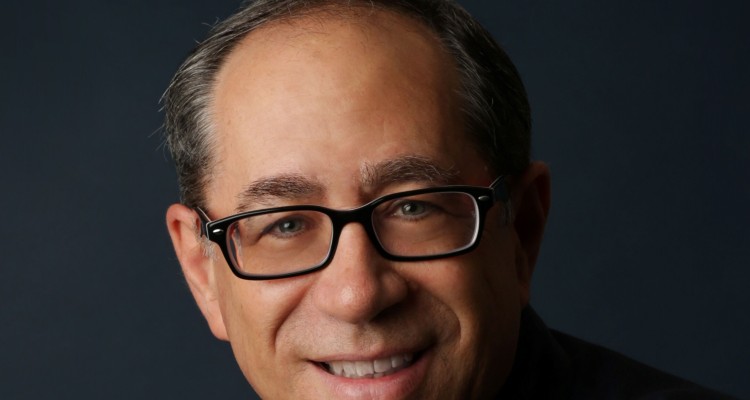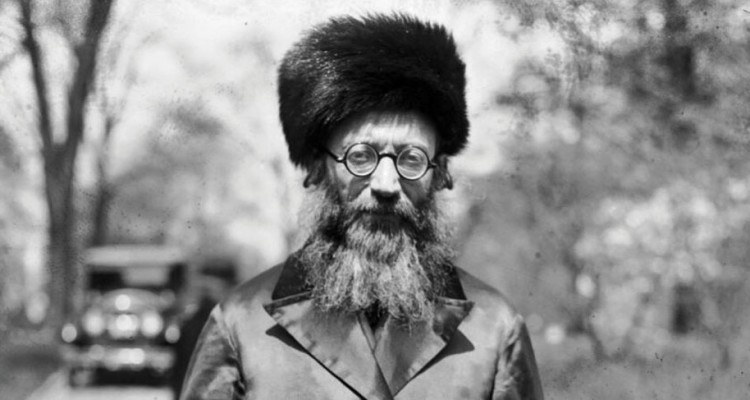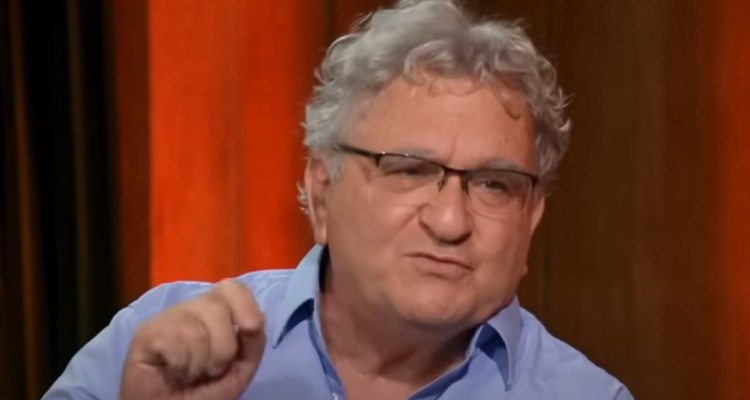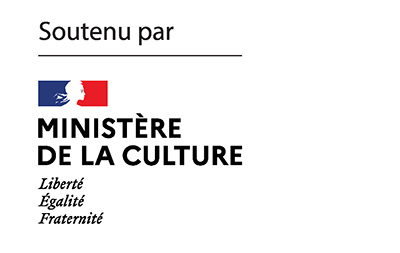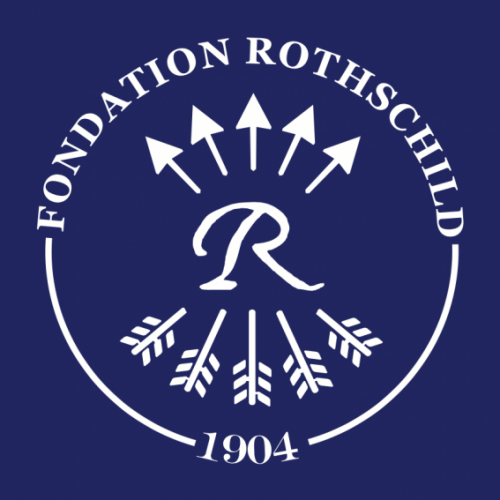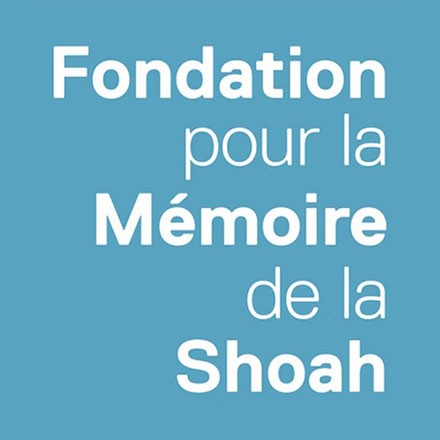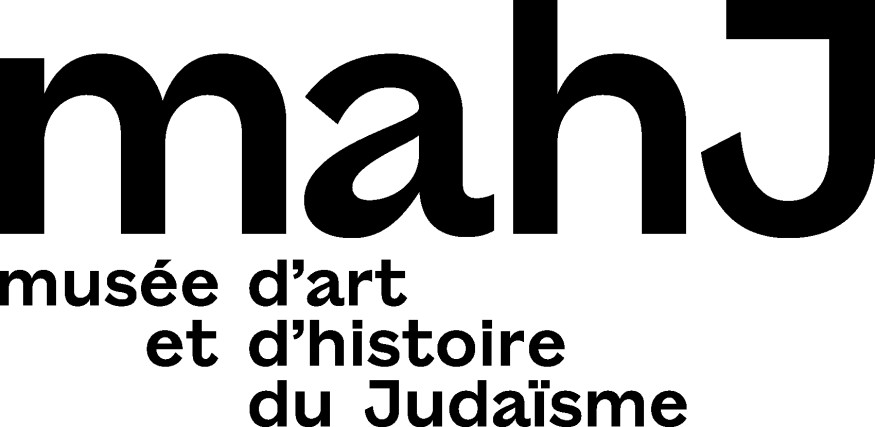Dara Horn is a journalist, essayist and professor of Yiddish and Hebrew literature. In this interview, she talks about what prompted her to write People Love Dead Jews in 2021, and the question this book explores: why do dead Jews arouse so much more interest than living Jews? Between the ritualization of a sterilized memory of the Holocaust, fascination with the figure of the Jew reduced to helpless victimhood and denial of the actuality of antisemitism, Dara Horn questions the deeply ambiguous way in which the West, and America in particular, relates to Jews, and to the ghosts they evoke[1].
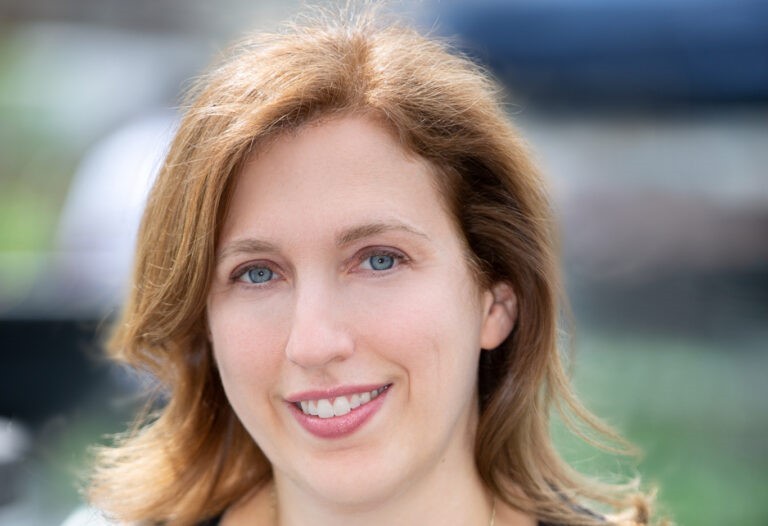
EP: Your book is not about hatred of Jews. It’s about something much more subtle. How would you define the obscure field you’re trying to address?
It’s about human dignity and the denial of it when someone is turned into a symbol. That’s where there’s an overlap with hatred. Non-Jewish societies see Jews as nothing more than a symbol. It’s a form of dehumanization.
EP: Right at the start of your book People Love Dead Jews, you say you’re tired of answering media questions about attacks on the Jewish community in the United States. Several months after the Coleyville attack, which followed on from the Pittsburgh and San Diego attacks[2], you’re still being asked the same question: why do these events keep recurring?
DH: After San Diego, I promised myself I wouldn’t respond to any more media requests about antisemitism attacks – it’s not my job. However, I finally wrote an editorial about the Coleyville attack for the Washington Post… I asked myself about my inability not to react: why, as a Jewish author, do I have to write about antisemitism attacks? I was prompted to do so when I noticed that many people were commenting on the events by talking about the issue of security in general in the United States, as if the shooting had nothing to do with the Jewish community. Some journalists tell of interviewing local residents who reply, “Oh, it could just as easily happen in our church. It’s pure chance. So I think I’m speaking for American Jews who want to express a simple fact: “No, it’s not a coincidence, it’s a targeted attack”.
We tell a story about dead Jews that makes everyone feel better about themselves, because, compared to the Nazis, we all look like good people.
There’s always that possibility of denial, when people say, “Oh, there are people shooting up schools too”. Or when they find all kinds of excuses to avoid saying that this is really a targeted attack against Jews. This reaction surprises me, because in the United States we invest a lot in teaching about the Holocaust. Education against intolerance is an integral part of what children learn at school. But if you look at the way the Holocaust is taught, you realize that the result is to create a ridiculous standard. In fact, it works on the following model: we tell a story about dead Jews that makes everyone feel better about themselves, because, compared to the Nazis, we all look like good people. People find out what happened in the Holocaust and feel sad; but at the same time they feel good about themselves because their reaction is like “Wow, I’d never do that!”. Sure, you probably wouldn’t murder people, and good for you. But that’s not the way to fight antisemitism.
EP: Unlike the others, the Coleyville bombing miraculously did not claim any Jewish victims. What difference did this make to reactions?
It surprised me a little. The perpetrator is dead. We didn’t have any dead Jews. So who cares? It’s a happy ending. Nobody died. But then, no one wonders how American Jews reacted to this attack, which is yet another traumatic experience for them. Every Jew was truly affected by this tragedy. The problem is that, outside the Jewish community, no one was disturbed by an event considered to be pure chance.
EP: Can you tell us more about the “plausible deniability” of antisemitism you’re talking about? Compared to previous attacks, this time we have seen a questioning of the antisemitism of the attack on a synagogue. But this seems absurd… .
The absence of victims is an opportunity for denial. But even in the presence of murdered victims, people manage to deny that antisemitism played any role at all… At the end of the book, for example, I ask about the difference in media and public treatment of the Hasidic community when it is attacked. In San Diego and Pittsburgh, the liberal Jewish communities have members who look like everyone else. In the case of the Hasidic community, the victims are often blamed. We hear, “These people have gentrified minority neighborhoods” or “We’re having a controversy at City Council over ward zoning, schools or something else”. When the facts are presented in this way, antisemitism no longer explains anything; or it’s just a hatred that no longer seems so irrational…
In Colleyville, we witnessed a similar dynamic. The denial of reality sets in because no one has died. The other phenomenon that occurs in this case is a kind of political soccer: people will only condemn the attack if the condemnation is in line with their political opinion. If the attacker is a far-right militant, a neo-Nazi shouting “Jews must die”, it’s easy to blame him. But if it’s a member of another group, there’s a lot of hesitation. We see this on both sides of the political spectrum, and almost in real time as the news comes in. When the Pittsburgh attack took place, at first everyone on the right of the political spectrum said it was probably a jihadist attack. Then all those people stopped talking about it when it turned out that the perpetrator belonged to the far right. Bad move! The same thing happened with Colleyville. The problem is that all these forms of terrorism are a threat.
I’d like to add that, in addition to these powerful biases, we often hear that Jews like to talk about antisemitism. I oppose this idea. Jews will have to talk about antisemitism as long as the people they consider their allies in the non-Jewish world don’t get involved in the fight against it.
EP: What were you trying to say with your book “People Love Dead Jews”?
This is my sixth book. The previous ones were novels, and I realized that I’d been avoiding this subject for 20 years. I have a PhD in Yiddish and Hebrew literature, so I’m constantly writing about Jewish culture and traditions. But I’ve always toyed with the idea of talking to the public about Jewish history in a different way. I used to ask my readers if they could name three death camps. Many could, because we’d all been taught about the Holocaust. Then I’d ask the same readers how many could name three Yiddish writers. Nobody could. It all started with this idea: “Why do we care how these people died if we don’t care how they lived?”. Then it all clicked: an article I wrote in the book about Anne Frank for the Smithsonian Magazine. The editor commissioned it, and I was horrified, because I really didn’t want to write about Anne Frank. But one of the things I’ve learned after twenty years of writing is that it’s in the moments of discomfort that the real story hides for an author. The subjects you don’t want to look at closely are the most interesting. So I agreed to the article project, and then I remembered the story I write about in the book, about an incident at the Anne Frank Museum in Amsterdam. A young Jewish man working there had not been allowed to wear his kippah and had had to make a special request to the museum’s board of directors. I almost thought I’d dreamed the story, so absurd did it seem, and in researching it I learned that, on the contrary, it wasn’t even the only story of its kind. For example, the same museum had no Israeli flags on its Hebrew audio guides, while all other languages were symbolized by a national flag. It was worth exploring.
The Jews play a major role in the imagination of the whole world, which has nothing to do with the real Jews, or rather demands to erase the real Jews that my work is about.
So I wrote this piece, which became the first chapter of the book and begins with the phrase: “People like dead Jews, living Jews, not so much”. This article was published in autumn 2018. A few days after it was published, there was the Pittsburgh synagogue shooting and the New York Times called me: “Would you like to write about dead Jews?” they asked. It’s always about dead Jews that my editors in mainstream publications, non-Jewish publications, want me to write. Once you’ve seen it, you can’t hide from it.
Yet I don’t really write about antisemitism in my daily work. But the Jews play a major role in the imagination of this non-Jewish society, in the imagination of the whole world, which has nothing to do with the real Jews, or rather demands to erase the real Jews that my work is about. It’s a deep-seated type of antisemitism that can take many forms, and is at the very root of all Western culture. This is what I explore in my book through two issues: why telling stories about dead Jews helps people feel better about themselves, and how living Jews have to erase themselves in order to participate in public conversation. It turned out to be very depressing. I wrote the book for myself, to understand what the problem was, and it turned out to be very depressing, not least because I realized how much society denies what we see with our own eyes.
EP: Your book begins with a memory from your youth: you’re having a conversation with two girls your own age, and one of them multiplies anti-Jewish stereotypes and quotes Hitler. You then make the connection between these stereotypes and the way the Holocaust is taught in the United States, mainly through the example of Anne Frank and her diary.
These two girls I met when they were teenagers had never met Jewish people before. They only knew about Jews what they had learned at school, namely that Jews are people who were killed during the Holocaust. Dead Jews, that’s all they knew.
But I want to say more: Jews aren’t just “dead”. They’re also a metaphor for the limits of civilization: the Jews are a symbol. They become people who have been killed to teach us something. But it’s a very dehumanizing lesson. Anne Frank is the model that embodies this idea: she’s a person who speaks a Western language, lives a modern life, isn’t particularly religious, doesn’t speak a Jewish language – in short, she’s just like everyone else. The appeal of her diary also lies in the fact that you don’t read the end. After all, it’s not a book about the Holocaust, since it’s not about people being murdered. Recently, there was a controversy in the United States when a school board wanted to ban Art Spiegelman’s graphic novel MAUS. “It’s very violent”, they argued, “there are naked people”. Yes, there are naked people, because the Jews were forced to undress before being murdered. And that was a problem. Teaching about the Holocaust that talks about naked people being murdered is a problem. Instead, a sanitized version of the Holocaust is taught or called for, and that’s what I think is really dangerous.
A similar approach can be found at the Holocaust Museum in Washington. There’s a children’s exhibit called “Daniel’s Story” in which you walk through the house of this German-Jewish boy living in Frankfurt. You see his soccer trophies and his father’s war medals, but not his copies of the Mishnah, nor the uniform of his Zionist or socialist youth movement, nor his father’s tefillin… Everything that makes these people Jewish is erased because the message is that Jews are like everyone else. The problem is that Jews have spent 3,000 years not being like everyone else, and you’re implying that it would be acceptable to murder them if they hadn’t been like everyone else. In other words, with this sanitized image, we want to emphasize the humanity of the Jews. And their humanity is everything that’s not Jewish about them. Instead of encouraging curiosity about different cultures, we teach people to avoid intolerance because everyone else is exactly like them. And the only thing they learn about Jews is that they were murdered…
EP: Another part of your book takes us to places where Jews are no longer present, sometimes called Jewish heritage sites. You seem angry at the way these sites are presented.
“Jewish heritage sites” is a wonderful marketing term. It’s so much nicer than “property seized from murdered or expelled Jews”. Who would want to visit such sites? There’s a definite exploitation of the past here. Some of these sites don’t even say why the Jews are no longer there. It’s as if the Jews are gone, and we’re sad they’re gone, and honor their memory. We’re once again dealing with people who tell stories about dead Jews in order to feel better about themselves, sometimes in a very cynical way.
“In the Jewish diaspora, there is this anger that we are forced to repress.”
In Egypt, the government has spent millions of dollars rebuilding synagogues in Cairo and Alexandria, with the support of UNESCO. They received an award for the way they celebrate Egypt’s diverse cultures. Yet Egypt has expelled all its Jews and seized all their property. They have an old lady whom they support and promote as the president of the Egyptian Jewish community. But there is no longer an Egyptian Jewish community, and the Egyptian authorities are careful not to explain why all the Jews magically left, leaving all their possessions behind. They refuse to accept any responsibility, even historical responsibility.
EP: So, who does this heritage belong to?
It’s not a Jewish heritage. Who inherited it? The local Jews were all murdered or expelled, so certainly not them. Today, there are non-Jews living in these places, singing: “This is our heritage”. Okay, but the fact that you expelled these people, murdered them or were complicit in these events is also part of your heritage. As a Jewish tourist, when you visit these places, you feel very uncomfortable. It’s a discomfort that, as Jews, we’re trained to bury, so we don’t recognize it for what it is. We bury it deep. I used to define it as grief. But it’s not grief, it’s rage. This malaise isn’t sadness, it’s anger. An anger that is the sign of an awareness of injustice. In the Jewish diaspora, there is this anger that we are forced to repress.
EP: The disappearance of the last survivors of the Holocaust raises the question of what new forms of memorial transmission are possible. In this context, proposals are emerging, one of which would be to transform their testimonies into holograms. This reminds me of the “ghostly presence” of Jews in Western discourse, which you mention in your book. How do you see the future of the memory of the Holocaust, and the challenges of transmitting it?
This idea of holograms is bizarre… There’s no shortage of documentation on the Holocaust. Thanks to all the research and publishing efforts of the last thirty years, we have a vast archive of recorded testimonies and, more generally, an enormous amount of information. What interests me is the role that Jews attribute to this historical material – a role very different from the one it plays in the non-Jewish world. In Judaism, we have a tradition of re-enacting scenes from our history. We see what happened in Jewish history as continuing to happen in the present. We see ourselves as just emerging from Egypt and standing at the foot of Mount Sinai. Jewish history gives the impression that everything is still happening in the present, over and over again. Take the Hagada, for example, and the way we think about our freedom today. This idea seems to be a symptom of the panic that is gripping our generation in the face of the death of the last generation of Holocaust survivors.
Panic over the loss of the past goes back a long way in Jewish history. The entire Talmud speaks of the destruction of the Temple and the transformation of the Temple service into a system of “virtual reality”. In fact, this is what rabbinical studies ultimately do: they recreate the Temple service in other forms. But this way of replaying scenes from our history is difficult to grasp as a point of contact between the Jewish and non-Jewish worlds, because the teaching of the Holocaust is the only thing the latter wants to hear about Jewish history. The holograms used to bring to life the testimonies of the survivors who have now disappeared are another example.
EP: Speaking of the loss of the past, the disappearance of witnesses, practices and words, you decided to learn Yiddish. What was your intention and how did your relationship with this language develop? It first came from another continent, where it was destroyed by the Holocaust, and is slowly disappearing in the United States as a result of the assimilation of the American Jewish community?
I’m a product of this assimilation, as my family has been in America for over a century. All my grandparents and most of my great-grandparents were born in the United States, and I’ve never heard anyone in my family speak Yiddish. My grandparents certainly knew it, but never used it. For my part, I was initially interested in Hebrew literature, starting with Israeli literature. But as I progressed, I came to read authors whose Hebrew I didn’t understand. They wrote in Hebrew, but they thought in Yiddish, which was their mother tongue. So I started learning Yiddish to improve my ability to read these Hebrew authors. My motivation was purely academic, not nostalgic. But in learning Yiddish and reading Yiddish literature, I realized that many of the things I thought I knew about Ashkenazi history were not true. I sort of fell into this hole.
I’ve tried to share this discovery with my readers, in my novels, by introducing them to this Yiddish-language culture that has been destroyed. A culture shared by all kinds of people: secular, religious, Jews of all political persuasions and from all countries. For me, it was like enabling a real understanding of the effects of the Holocaust, which wouldn’t be limited to these generic Jews or a metaphor for the limits of civilization.
EP: Auschwitz is now the subject of romance novels and fantasy books, and the Holocaust has entered “pop culture”. This perpetuates the memory, but in a strange and distorted way, sometimes with perverse effects: talking about love in a death camp is something really twisted. On the other hand, the Righteous Among the Nations are put forward, by nations that sometimes don’t look their past in the face.
This wasn’t true 40 years ago, but it is indeed true today. Many of those who write about it are not Jewish. The reason for this evolution is that these books contribute to this feeling of self-flagellation. Are the righteous, virtuous non-Jews supposed to be sources of inspiration? In fact, their number is statistically insignificant. Stories of the Righteous are the opposite of inspirational, because they show what could have happened if there had been more of them. Anyone could have been Danish[3], but not everyone was. It shows that it was possible and that people chose not to do it.
EP: One of the strongest moments in the book is when you criticize the teaching of the Holocaust as emphasizing the idea of the inevitability of murder.
The Holocaust is treated as if it were a natural disaster or a pandemic. It has an inescapable character, against which education is seen as an additional vaccine. But in the end, it doesn’t seem that anyone could have made any other choice. It’s very disturbing when you think about it like that. After all, the Holocaust is obviously not a natural phenomenon, and to claim that it was inevitable is truly preposterous. The Holocaust romance, the fantasy, the fiction, it’s all exploitation. The theme of “the banality of evil”, of people just doing their job, goes in the same direction. However, if you read Yiddish literature on the Holocaust, you find just the opposite: a particularly imaginative sadism. Avram Sutkaver, a poet from the Vilna ghetto, recounts how the Nazis captured Jews and made them dance naked while they tore up Torah scrolls. If your only aim is to kill people, you don’t need all that. It’s sadism.
We also see this in Chava Rosenfarb’s book The Tree of Life, in which one of the characters ends up being castrated. There’s no reason for castration if your aim is to kill all the Jews. We see this even in the recent story told about Anne Frank. The person who betrayed her was Jewish, they say. They have finally realized their dream: to make the Holocaust the fault of the Jews. That was always the goal. It’s all about erasing responsibility.
EP: Ever since we launched the Revue K., I’ve been thinking about the notion of “hauntisemitism” to capture the way in which the presence of Jews haunts Europe today and generates, not necessarily hatred, but at least an insistent unease. It’s a paradoxical presence, because it’s not so much a question of the physical or numerical reality of the Jews’ existence, as of their moral, ghostly presence, which brings back the weight of guilt and resurfaces a latent, floating animosity. I have the impression that your work intersects with this reflection.
It’s very interesting. This spectral presence of the Jews is something I’ve been thinking a lot about. Jews are used as ghosts of Western civilization. Hence the problem of living Jews, who are not symbols: they spoil, they compromise history.
I would say that this presence is rooted in the rejection of Judaism by Christianity and Islam, when Judaism becomes that counter-culture that runs through the whole history of the West. I think the most surprising and interesting thing about the history of Jewish civilization is the litany of resilience and the sort of constant reinvention. In my opinion, this is what other cultures find hard to accept because, once again, it ruins their history. As a result, they have to ignore the living Jews, because otherwise, it’s as if they’ve won. And I think that explains their fascination with dead Jews. And we see it, as I said, in the way the Holocaust is commemorated. But that’s not all. This attitude is ubiquitous and applies equally to Jewish heritage sites and even literature.
The problem of living Jews, who are not symbols: they spoil, they compromise history.
In any case, I like the term “hauntisemitism” very much. I think it’s legitimate to fear ghosts because they haunt you, they’re everywhere and nowhere at the same time, and they call you to account because you live in their house.
EP: How was your book received?
I’ve been invited to speak in many places. I’ve also given many interviews to different TV and radio media, some for a Jewish audience, some for a general audience, and some for specific non-Jewish audiences, such as Christian TV channels. I’ve given a lot of thought to the reactions to the book, both positive and negative.
As far as I’m concerned, the distressing aspect is that I receive a lot of mail from Jewish readers, hundreds of them, from all walks of life. Old people, young people, very religious people, very non-religious people, from all over the United States, from other countries too. And they all write me exactly the same message, which says: “I’ve felt uncomfortable all my life, and I’ve never understood why. This book articulates that uncomfortable feeling for me. Thank you”. And he adds: “I’ve never told anyone this, but…” before revealing a long story about horrible personal experiences they’ve had in a wide variety of situations. And sometimes they say, “Can you help me?” I’m a writer. I’m not a politician or a therapist. I wrote this book as a kind of intellectual exploration. But I have to admit that this problem is much bigger than I thought. I’m talking about antisemitism in all its forms, not just the most obvious ones, like violence, here in the United States. I didn’t really see this book as a book about antisemitism. It’s something else, but it’s related.
Other positive reactions have come from non-Jewish readers. I’ve discovered that many of my compatriots are full of good will and really want to be good neighbors and allies. But they don’t know how to go about it. Many people from other minority groups have told me how surprised they are that our respective experiences are so similar. Some of them even confess that they are “getting over their antisemitism”.
EP: You regret that people come to you and tell you how they feel or what they’ve experienced. But there’s one sentence in the book that struck me. You say that after the first attack in Pittsburgh, after the second attack in San Diego, you were angry. But after the third attack that followed, you simply “gave up”. For me, this is a bit of a mystery: understanding what it means for an American Jew to give up? What does it imply?
I say this because I realize that this is a permanent problem that is not going to go away. In the United States, unlike in Europe, we had a very deep conviction, which I grew up with, that America is the exception. My family has been in America for 120 years. Many American Jews have been brought up with the idea that America is totally different from the rest of Jewish history, that there is no antisemitism here, that this is the only place in the history of the world where Jews are like everyone else and treated the same as everyone else, that there has never been any intolerance or discrimination. But obviously, this is a myth. So why is there so much teaching about the Holocaust in the United States? The Holocaust didn’t happen here, it’s a way of putting antisemitism at bay. We often struggle to talk about slavery, segregation and the genocide of Native Americans. People don’t like to be held accountable.
EP: How has this conviction evolved in recent years? When I read your book, I get the impression that a clear pattern is emerging. Perhaps it’s the possibility of dying now because of one’s Jewishness in America.
That’s not at all the case in the statistics. You’re much more likely to be shot in a shopping mall or a school. For me, the problem is self-erasure. I’ll give you an example: I have a teenage daughter. She spent her summer in Israel with friends who post absolutely everything they do on Instagram or TikTok but, here, they refrained from talking about their trip to Israel. To me, they’re censoring themselves because they know they’re going to be attacked online. They’re already self-censoring the way they want to appear in the public sphere.
EP: Let’s go back to your argument about the obsession with dead Jews. How much of this obsession do you think is linked to Jewish culture and history, and how much to the human obsession with death and danger? To put it another way, Jews are the world’s specialists in unsolicited death. It’s a fascinating pattern.
Are you suggesting that this fascination might express a morbid interest in violence? Denial is plausible… It’s interesting. For me, it has less to do with death than with the relationship to power, because Jews are only acceptable as long as they are powerless. So it could mean that they’re dead or politically powerless. I think this is an important part of the conversation. Incidentally, it’s also what people think about women. Jews aren’t supposed to be able to act. They’re not supposed to make their own choices. Look at Israel. I think it’s linked to what you said earlier, this idea of hauntisemitism. On the other hand, this morbid interest allows people to feel unaccountable, to feel good about themselves. The aim is to make things unfamiliar.
EP: Most of the murdered Jews are in Europe. What image do American Jews have of European Jews? Do they even think there are still Jews on this continent?
We are triumphalists when we talk about our thriving community and see Europe as a decimated community. Over the last twenty years or so, we’ve mostly heard about violence against European Jews. We were always very shocked when we went to visit a European synagogue and had to tell them in advance that we were coming, show our passport and all these high-security measures. And now it’s the same in the USA… But I still have the impression that, whatever happens in the United States, it’s much worse in Europe. That’s how we feel.
EP: When you say “worse”, you mean it’s already bad in the US, don’t you? It means that it could slowly become comparable. We talked about Jewish heritage and holograms. There’s also this trend towards Jewish DNA genealogy, DNA proof that, across the ocean, you have Jewish ancestors, dead Jews in your family….
Sometimes we see people who take the DNA test and say: “Oh, I’m Jewish! Then they start getting interested in Judaism. It’s very bizarre. I remember a few readers writing me negative messages. Sometimes they say, “I can’t be antisemitic because I took the DNA test and I’m Jewish”. I have the impression that this is a kind of new version of “some of my best friends are Jewish”.
EP: “Some of my ancestors are Jewish…”
There we go! In Spain, it’s pretty cool to have Converso ancestors. It’s considered very hip or something. It makes you exotic and cool. There’s a reason these people don’t know they have Jewish ancestors. Their ancestors stopped being Jewish and we know they were forced to do so.
EP: Since October 7, a persistent unease has been expressed: Jews who have just died don’t count. And neither do the living hostages. On the other hand, we hear that some lives seem to be worth more than others. Does October 7 affect your analysis of the question of dead Jews? What is the status of dead Jews today?
Since October 7, many people have pointed out to me that “people don’t even like dead Jews anymore”. I believe, however, that this idea is still valid. Look at the many vigils organized around the world to pay tribute to the Israeli victims immediately after October 7, including in Paris. You’ll see that people love dead Jews, as long as they’re vulnerable and helpless. In fact, I found it remarkable how much people seemed to relish the idea of showing their support for murdered Jews, until Israel responded with force. That’s how people love the Jews: powerless to stop their own slaughter. As soon as the Jews show any capacity for action, it’s all over.
You’re right to point out that there have also been a lot of people who have skipped the stage of mourning dead and powerless Jews and gone straight to “this is justified resistance to evil Jewish villains”. And of course, it’s an idea that’s gaining momentum today. But I think the brief moment when Israeli flags were flown over the Eiffel Tower and the Brandenberg Gate in Berlin is a perfect example of people’s love of Jews as helpless victims: it’s the only way they feel comfortable with Jews.
Interview by Elie Petit
Dara Horn is the award-winning author of six books, including the novels In the Image (Norton 2002), The World to Come (Norton 2006), All Other Nights (Norton 2009), A Guide for the Perplexed (Norton 2013), and Eternal Life (Norton 2018), as well as the essay collection People Love Dead Jews: Reports from a Haunted Present (Norton 2021). His nonfiction work has appeared in The New York Times, The Wall Street Journal, The Washington Post, The Atlantic, Smithsonian, Tablet and The Jewish Review of Books, among many other publications.
Notes
| 1 | On October 22, after this interview was conducted, Dara Horn published an op-ed in the New York Times entitled “Why Jews Cannot Stop Shaking Right Now”. In it, she challenged her fellow citizens about the Jewish perception of the October 7 event, the way it speaks to living Jews about their dead Jews. She began: “There is a reason why so many Jews can’t help but tremble today. And the notion of intergenerational trauma is not enough to describe the hell into which the October 7 attacks have plunged Jewish communities around the world”. Drawing on the recurrence of the massacre of Jews in history, integrated as a possibility at all times by Jews, even at a distance from its realization, she concluded by also evoking the vital impulse of the Jewish tradition, that of replaying the narrative (reenactment) and said: “History continues and we start it all over again.” |
| 2 | The interview took place during 2022. On January 15, 2022, Mali Akram, a 44-year-old British citizen, took a rabbi and three congregants hostage inside Congregation Beth Israel in Colleyville, Texas. After being held for 11 hours, the four people inside managed to escape alive. The suspect was shot dead by authorities. The FBI described the incident as a “terrorist incident” targeting the Jewish community. On October 27, 2018, a gunman named Robert Bowers opened fire inside a Pittsburgh synagogue, killing eleven people, in what would become the deadliest antisemitism attack in U.S. history. The man was charged with hate crimes and firearms offenses. Robert Bowers was convicted of 11 murders and sentenced to death on August 2, 2023, by a U.S. federal jury. On April 27, 2019, a gunman identified as 19-year-old John Timothy Earnest entered Poway’s Chabad synagogue on the last day of Passover. Armed with an AR-15 rifle, Earnest killed a woman and wounded three others, including the synagogue’s rabbi. Investigation revealed that he believed in a conspiracy theory of white genocide. |
| 3 | The rescue of Denmark’s Jews took place during the occupation of Denmark by the Third Reich in the Second World War. On October 1, 1943, Adolf Hitler ordered the arrest and deportation of Denmark’s Jews. Despite great risks to their lives, the Danish Resistance, with the help of many Danish citizens, managed to evacuate 7,220 of the country’s 7,800 Jews, along with 686 non-Jewish spouses, by sea to then-neutral Sweden. Wikipedia. |
